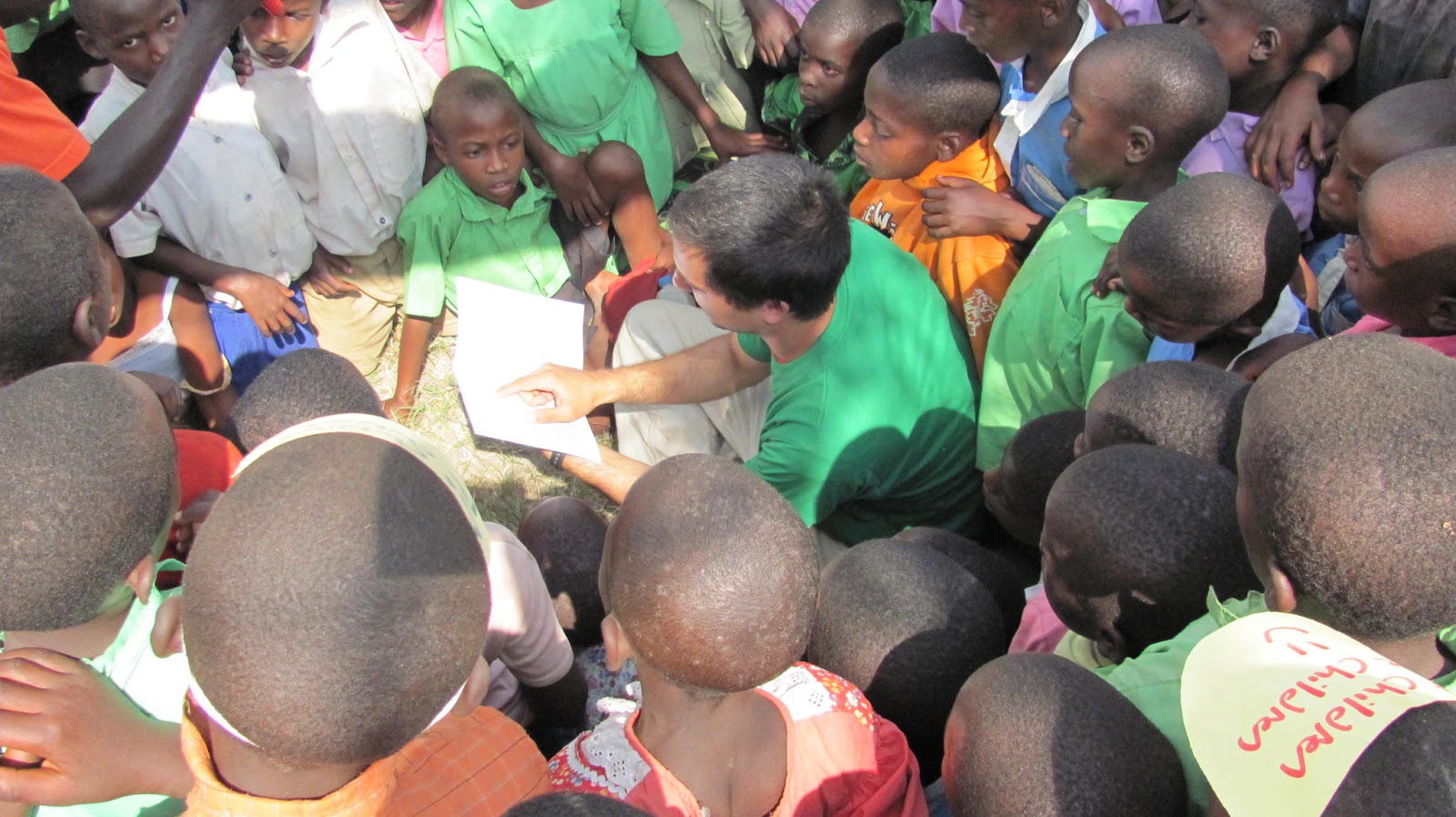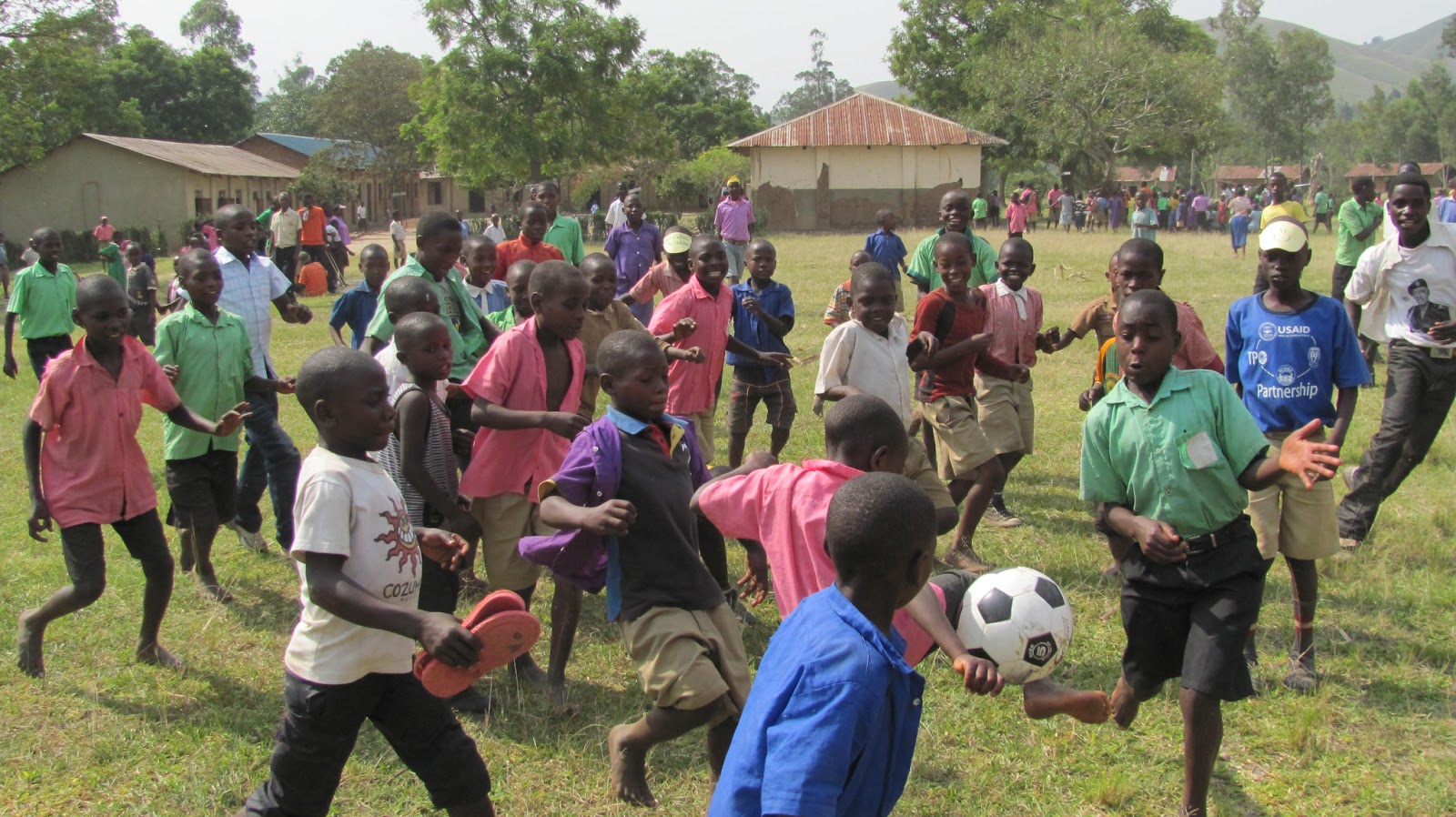The goat pass out ceremony is certainly the highlight of our project. It's the Super Bowl for vet students working on goats in Uganda. Held at the FAOC demonstration farm, it is a day-long event that is meant to both celebrate the women's hard work in preparing to receive a goat and educate them on basic goat husbandry and the pass-on system. From our perspective it's a day full of promise and hope - hope that the women receiving the goats can use this opportunity to raise a small goat herd and generate some much needed income for the many children and grandchildren in their care.
A lot of preparation leading up to the pass-out ceremony has taken place in the last couple weeks. We've been visiting households in the communities to identify vulnerable women who could qualify as beneficiaries. Working with FAOC, we identified 21 women and 1 man who are the caretakers and providers for vulnerable and orphaned children. Almost all of them were widowed, often due to
HIV/AIDS, and most were subsistence farmers who work tirelessly to provide for the many children in their care. In addition, to qualify they must have built a suitable goat pen and demonstrated the desire and capacity to provide for their goats. We can't thank the dedicated staff at the Foundation for AIDS Orphaned Children (FAOC) enough for their hard work and long days in the community with us. And while our Runyankole is improving, their translation probably helped a bit, too.
Last week we began the process of selecting goats to purchase for the pass-out ceremony. Our main criteria were healthy Brucella-free young female goats. This would give our beneficiaries the best chances of getting their goats bred as soon as possible so they can pass-on and then start their own herd. We went to four different farms and took blood samples to test for Brucella - a leading cause of abortion for livestock in Uganda. We then arranged to purchase the Brucella negative goats - and also let the farmers know which goats are Brucella-positive so they can be culled from their herds. Dr. Joseph Ruhinda, a veterinarian working with NARO (the National Agricultural Research Organization in Uganda) was kind enough to take us through the steps of testing for Brucella and also provided the contacts for the many goat farmers we visited. We owe a huge debt of gratitude to Dr. Joseph (doctors are affectionately referred to by their first names in Uganda).
On Monday we arranged to rent a truck and pick up our goats. Another interesting tidbit is that renting a truck in Uganda also means renting a driver for the day. This made things a little tighter for space than we hoped, but we long ago learned to just roll with the punches for these sorts of things. "Oh, we have another person to take with us all day. Sounds good". It could have been worse - we thought we'd need multiple trips to transport 35 goats in a relatively small pick-up. We were wrong again.
A lot of preparation leading up to the pass-out ceremony has taken place in the last couple weeks. We've been visiting households in the communities to identify vulnerable women who could qualify as beneficiaries. Working with FAOC, we identified 21 women and 1 man who are the caretakers and providers for vulnerable and orphaned children. Almost all of them were widowed, often due to
HIV/AIDS, and most were subsistence farmers who work tirelessly to provide for the many children in their care. In addition, to qualify they must have built a suitable goat pen and demonstrated the desire and capacity to provide for their goats. We can't thank the dedicated staff at the Foundation for AIDS Orphaned Children (FAOC) enough for their hard work and long days in the community with us. And while our Runyankole is improving, their translation probably helped a bit, too.
Katie and Tara visiting the Kishuro group
Last week we began the process of selecting goats to purchase for the pass-out ceremony. Our main criteria were healthy Brucella-free young female goats. This would give our beneficiaries the best chances of getting their goats bred as soon as possible so they can pass-on and then start their own herd. We went to four different farms and took blood samples to test for Brucella - a leading cause of abortion for livestock in Uganda. We then arranged to purchase the Brucella negative goats - and also let the farmers know which goats are Brucella-positive so they can be culled from their herds. Dr. Joseph Ruhinda, a veterinarian working with NARO (the National Agricultural Research Organization in Uganda) was kind enough to take us through the steps of testing for Brucella and also provided the contacts for the many goat farmers we visited. We owe a huge debt of gratitude to Dr. Joseph (doctors are affectionately referred to by their first names in Uganda).
Devon drawing blood
Brucella-testing
On Monday we arranged to rent a truck and pick up our goats. Another interesting tidbit is that renting a truck in Uganda also means renting a driver for the day. This made things a little tighter for space than we hoped, but we long ago learned to just roll with the punches for these sorts of things. "Oh, we have another person to take with us all day. Sounds good". It could have been worse - we thought we'd need multiple trips to transport 35 goats in a relatively small pick-up. We were wrong again.
After taking taxis for the last five weeks in Uganda, we know exactly how they feel
We were also able to purchase some goats from the FAOC social business. The social business was started last year by FAOC and Dr. Steve Kruzeniski, a WCVM grad and Vets Without Borders alumnus. The social business arranges to purchase goats from our vulnerable beneficiaries to ensure they get a fair price for their goats since they often are forced into taking prices well below market value. We were very proud to be able to purchase goats from former beneficiaries!
Once we had all of our goats we brought then to the FAOC demonstation farm where we dewormed, vaccinated, hoof trimmed and spray for ticks. The goats then got to settle down for the night before the pass-out ceremony the next day.
Hoof trimming
Vaccinating
Stylishly vaccinating
When goats who don't know each other are mixed, there's often a lot of head-butting as they jockey to establish a new dominance hierarchy. While this is normal, sometimes it can lead to the small goats getting bullied just a little too often. That's when we step in to police them a bit.
You have to speak their language
The goat pass-out ceremony began with a 90 minute husbandry training session. We covered the main issues that we want to beneficiaries to focus on - deworming their goats every 3 months, vaccinating yearly, spraying for ticks and providing enough feed and water. Whenever possible, we encouraged the members to teach each other good tips and husbandry practices. We also stressed the importance of using the paravet regularly to ensure their goats remain healthy. Preventative medicine is not ingrained in Uganda as it is for North American producers so we repeated over and over again how important it is to keep up with vaccination and deworming before the goats get "sick".
One of the paravets explaining how to use the dewormer
Joseph, one of the FAOC extension workers, speaking to the beneficiaries
We also explained how the goats we are giving out are not "gifts" and that it is the responsibility of the beneficiaries to pass-on to keep the project going. Once the beneficiaries have given one kid to another group member and sold one to provide money to their group's revolving fund they can keep all future kids and increase their herd size. The community's revolving fund is basically a small-scale micro-finance fund that provides the women access to small loans to cover everything from school fees to loans for goat care or other business opportunities. Many communities have very successfully build up their revolving fund from selling goats from the pass-on.
Tara explaining the pass-on
We arranged for one of the paravets to cook lunch for everyone in attendance and after a much larger than expected plate of matooke, beans, sweet potato, and posho (maize meal) we were ready to pass out the goats!
Finally handing over the goats to the women was an unforgettable experience. I couldn't be happier to have shared the experience with such a hard-working team as Devon, Ilse, Katie, Tara, and our dedicated FAOC staff workers Vivian, Joseph and Shafiq who we worked so closely with in the field over the past five weeks. And to see these hard-working and always cheerful women finally receive their goats was truly something special.
We would like to sincerely thank all of you who donated money to purchase goats - and a big thank you to Barbara Souther for coordinating all of our fundraising. This project is something special and we are very grateful to have the support of friends and family back home. Many women in the communities around Kaberebere, Uganda have all been given a real opportunity to provide for their grandchildren thanks to you.

















































